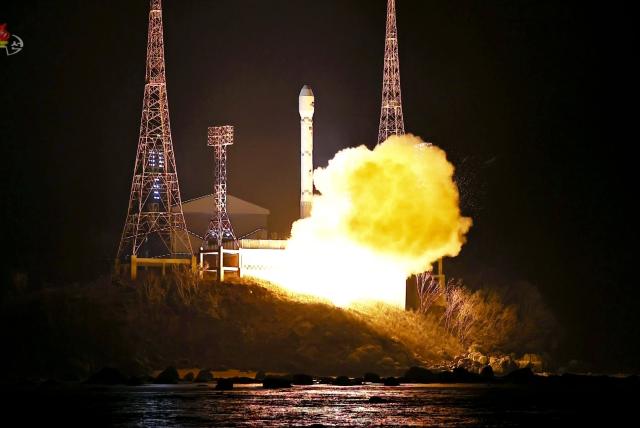
Pyongyang had previously notified Japan on November 21 that it would attempt to launch a rocket to send a satellite into orbit between November 22 and December 1. However, the launch took place a day before the previously noticed time.
According to Pyongyang on November 22, the military spy satellite was designed to monitor the movements of the United States forces and its allies in areas near the Korean peninsula. North Korea attempted twice -- in May and August 2023 -- to send a satellite into orbit but rockets ended up crashing into the West Sea before reaching the target altitude.
The Korea Central News Agency (KCNA), Pyongyang's state-operated news agency, said that a satellite launch vehicle was launched from the Cholsan launch facility at 10:42 p.m. (1342 GMT) on November 21 and successfully put "Malligyong-1," the military satellite, into orbit at 10:54 p.m., 705 seconds after the launch.
"The launch of the reconnaissance satellite is a legitimate exercise of our right to self-defense. It is a necessary measure to protect our country from the dangerous military provocations of the enemy. The launch will significantly enhance the war-readiness posture of our military and deter any further aggression from the enemy," KCNA stated.
According to Pyongyang's state media, North Korean leader Kim Jong-un monitored the rocket launch at the Cholsan launch facility and "ardently" congratulated officials from related government bodies, researchers, and engineers. KCNA also revealed that North Korea plans to send numerous military satellites into orbit in the near future.
On May 31, Seoul and other South Korean cities were woken up by sirens, and emergency warnings were sent out through smartphones after the South Korean military detected a projectile that was fired by North Korea at 6:27 a.m. Without disclosing the source of the threat, the text-based emergency notification urged citizens to take shelter at designated bomb shelters or evacuate to a safe area, making people very confused and extremely worried.
The projectile flew southwards from Dongchang-ri some 110 kilometers (68 miles) northwest of Pyongyang over Baekryeong Island, a South Korean island located near the Northern Limit Line. The defense ministry has identified and salvaged the remains of the crashed rocket in the sea some 200 kilometers west of Eocheong Island, located some 190 kilometers southwest of Seoul.
The second launch which took place in August did not cause as much havoc in South Korean society as it did the first time. A new-type carrier rocket called "Chollima-1" carrying a reconnaissance satellite "Malligyong-1" was fired from the Cholsan launch facility but also crashed into the sea on August 24.
Copyright ⓒ Aju Press All rights reserved.




